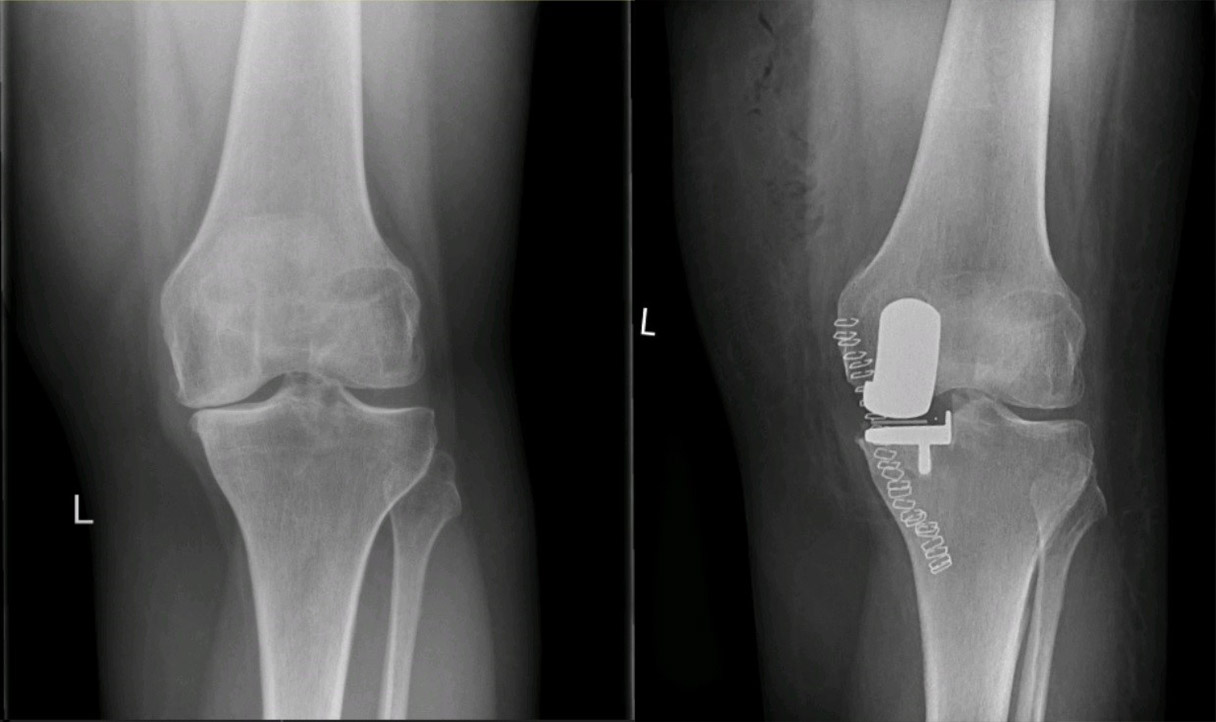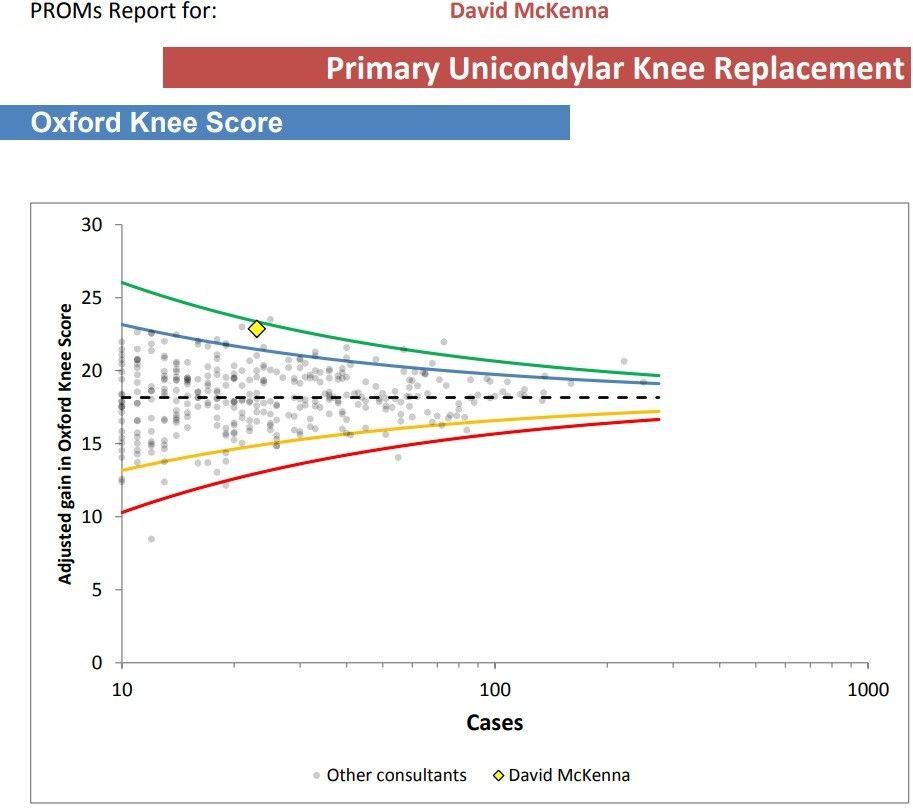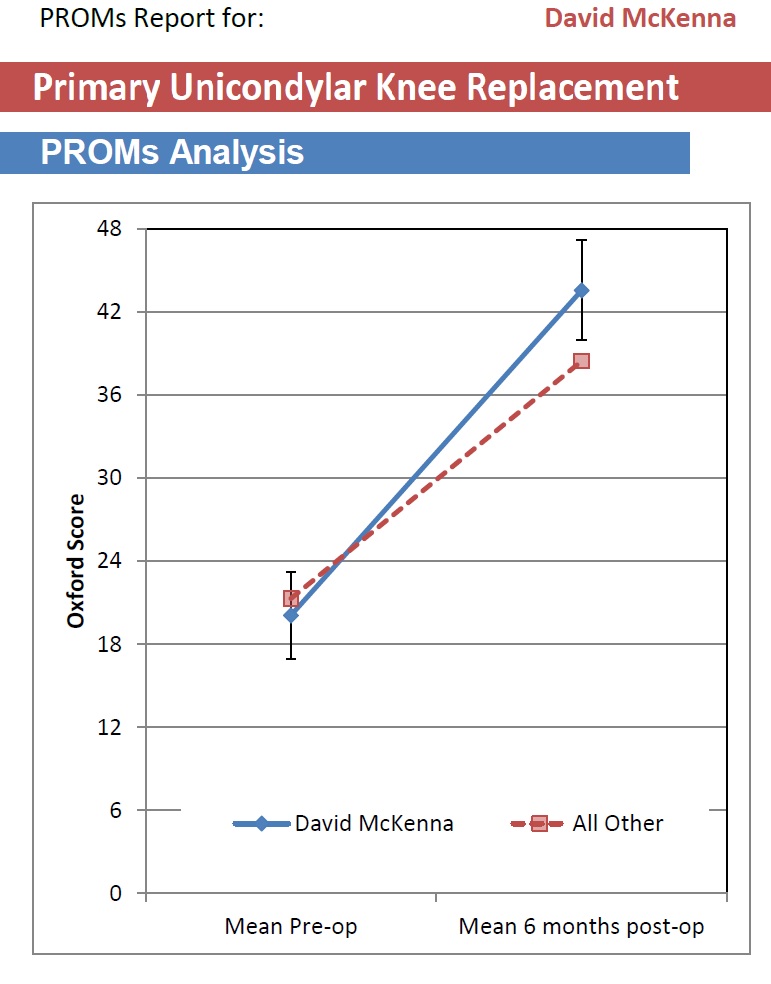
When only part of the knee is damaged you may be suitable for a partial knee replacement instead of a total knee replacement. The benefit of a partial knee replacement is retention of most of your own knee and a more natural feel to the knee replacement. Partial knee replacements involve a smaller incision, shorter operation and a quicker recovery.
Mr McKenna uses an enhanced recovery pathway with local anaesthetic infiltration and an adductor canal block. The combination of these interventions means less post-operative pain and a quicker recovery. Most patients having a partial knee replacement are able to go home the next day after surgery. Most patients have stopped using their crutches by the time they are seen at 2 week’s follow-up.
These patients report better functional knee scores than total knee replacement recipients. Partial knee replacement recipients are more likely to “forget they have a knee replacement”. Between 20-40% of patients considering knee replacement surgery could be suitable for a partial knee. Not all knee surgeons are able to offer partial knee replacement.
The Oxford Unicompartmental Knee by Zimmer Biomet
Mr McKenna uses the Oxford Unicompartmental Knee by Zimmer Biomet. This has a 10A* ODEP rating and is the most commonly implanted partial knee worldwide. It is also the joint replacement that has been most researched. Mr McKenna was trained to perform the Oxford Unicompartmental Knee in the designer centre whilst he worked there as a consultant.
PROMS report
David McKenna’s PROMS (Patient Reported Outcome Measure) data for partial knees is shown in the graph. This data is collected independently of the surgeon by the National Joint Registry.
Uni Knee PROMS (Patient Reported Outcome Scores) Chart shows the average improvement in Oxford Knee Score of Mr McKenna’s patients versus the average improvement of all other Surgeons. Data is collected and presented independently of Mr McKenna by the National Joint Registry (NJR).
Every partial knee surgeon in the UK is represented by a dot. The dashed line is the average improvement in knee score at 6 months post-surgery. The number of cases is represented on the X-axis. The improvement in knee score is measured on the Y-axis. The surgeons above the blue line are achieving the top 2.5% of knee improvement scores in the UK. Mr McKenna’s outcomes are represented by the yellow dot.

